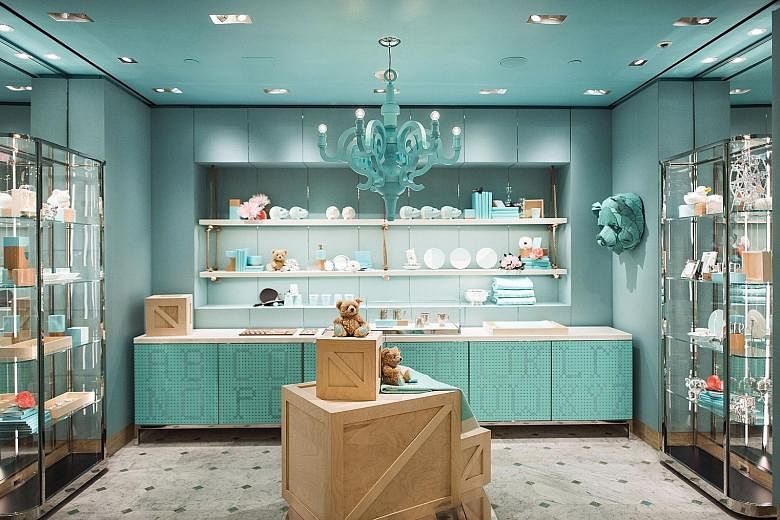NEW YORK • Reed Krakoff, the designer who catapulted Coach to fashion prominence and made it a US$5-billion (S$6.7-billion) handbag Goliath, has officially traded in his leather for diamonds.
Hired by Tiffany & Co last year as chief artistic director, he was brought in to overhaul the iconic jewellery brand's design, attract younger shoppers and reverse an extended sales slump.
Last Tuesday, Krakoff released his debut collection, dubbed "Paper Flowers", a line that serves as a vital piece of Tiffany's strategy to introduce more items, more often.
By shaking things up and keeping product lines fresh, the jeweller's executives hope to inject some excitement into a dusty brand in serious need of a revamp.
Chief executive officer Alessandro Bogliolo, a former executive at Italian luxury jeweller Bulgari, took over Tiffany last year. In March, he outlined his plan to revitalise the company by tweaking marketing and dramatically altering its stores to draw more customers.
At the same time, he sought to shore up Tiffany's procurement and IT operations while enhancing its capability to sell jewellery online. The initial signs are promising: same-store sales, a key retail metric, turned positive on a currency-constant basis last quarter.
Now comes the new product.
The platinum bracelets, pendants and earrings in the Paper Flowers collection have, of course, a floral motif with asymmetrical petals covered in diamonds and pops of blue tanzanite. The centrepiece is a diamond bib necklace dressed in 68 carats of round and pear-shaped diamonds. It takes five months to make.
Krakoff's whimsical designs are meant to eschew formality, despite the extravagant materials used to create them.
As the designer puts it, it's "about stripping away all of the rules associated with fine jewellery". Tiffany's prices for the items range from US$2,500 to US$790,000.
The 181-year-old luxury house has long relied on hit products to lure shoppers, so each new line is closely watched in the hope that it will be the next headliner. Yet the company has had trouble developing new stars of late.
Old styles of necklaces and pendants, designed decades ago by such names as Elsa Peretti and Paloma Picasso, remain its top draws as new items failed to catch on. Tiffany seeks to help remedy that with a new 17,000 sq ft workshop near its New York headquarters, a design playground for its most skilled craftspeople.
Krakoff, 54, was an architect of Coach's rise to leather goods powerhouse, with bags that rivalled the more expensive, established brands for the crown of status symbol accessory.
He gave Coach a fashion edge in the late 1990s and the early 2000s, infusing what had been a utilitarian brand with flair. Some of his designs became ubiquitous, such as the signature line with prints of interlocking Cs.
At Tiffany, he is the single creative authority, overseeing jewellery, luxury accessories, stores, e-commerce and advertising. He even created the Blue Box Cafe, a restaurant on the fourth floor of Tiffany's New York flagship that is painted in the brand's signature robin's-egg blue. Krakoff's much-hyped Everyday Objects home decor collection, featuring US$165 pizza cutters and US$425 protractors made of sterling silver, was deemed a success by executives.
Mr Bogliolo called out the experiment as a "very meaningful test" for Tiffany, since it was one of Krakoff's first product lines. Sales of home goods grew in the double digits that quarter.
Paper Flowers will be an even bigger test, as jewellery represents the bulk of Tiffany's business. The company, Mr Bogliolo said, considers this its most significant high-end jewellery launch since 2009, when Tiffany's diamond key pendants hit stores.
BLOOMBERG

